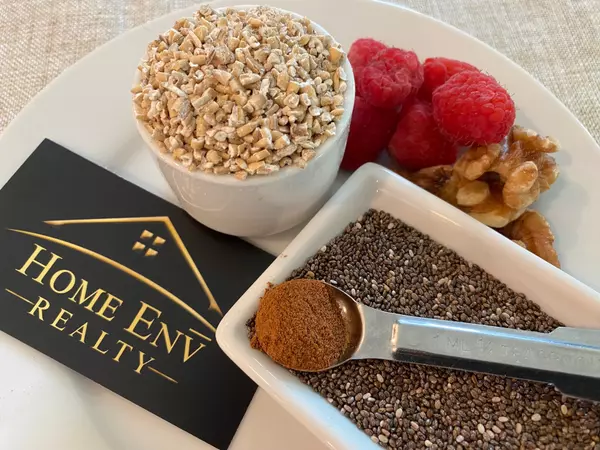Home Buyer Tip: Overcoming High Interest Rates

In today’s real estate market, high-interest rates are a concern for many homebuyers. With rates reaching levels we haven’t seen in years, affordability can be a real challenge. But, while higher rates can impact your purchasing power, there are ways to navigate the situation and still buy your dream home. Here are some strategies for overcoming high-interest rates and setting yourself up for home-buying success.
1. Boost Your Credit Score
Your credit score is one of the main factors lenders consider when determining your interest rate. A higher score can translate into a lower rate, even when the market rates are high. Here are a few tips to improve your credit score:
- Pay bills on time: Late payments can hurt your score significantly.
- Reduce outstanding debt: Aim to pay down high balances on credit cards and avoid taking on new debt.
- Avoid opening new accounts: Each new account results in a hard inquiry, which can temporarily lower your score.
Improving your credit score may not happen overnight, but it’s a powerful way to reduce your interest rate when you’re ready to buy.
2. Consider an Adjustable-Rate Mortgage (ARM)
While fixed-rate mortgages are often preferred for stability, adjustable-rate mortgages (ARMs) can offer lower initial rates. An ARM typically starts with a lower interest rate for the first 5, 7, or even 10 years, after which the rate adjusts periodically. If you don’t plan to stay in your home long-term, an ARM could be a smart way to take advantage of lower payments up front. However, it’s essential to understand the risks involved if rates increase after the initial period.
3. Save for a Larger Down Payment
Increasing your down payment can lower the amount you need to finance, helping to reduce your monthly mortgage payment. A larger down payment can also make you more appealing to lenders, potentially giving you access to better rates. If you’re struggling to come up with a larger down payment, consider:
- Setting up a dedicated savings account: Consistently contributing to this account can help grow your savings over time.
- Cutting back on discretionary spending: Small sacrifices now can help you reach your goal faster.
- Exploring down payment assistance programs: Depending on your location and financial situation, there may be local or federal programs that provide assistance for first-time homebuyers.
4. Shop Around and Compare Lenders
Interest rates and loan terms can vary significantly between lenders, so it pays to shop around. Take the time to speak with multiple lenders, including credit unions, banks, and online mortgage companies. When comparing loan offers, pay attention not only to the interest rate but also to closing costs, fees, and other terms. By exploring multiple options, you may be able to secure a lower rate or find a lender willing to work with you to meet your budget.
5. Consider Buying Down Your Interest Rate
Many lenders offer the option to “buy down” your interest rate by paying additional points at closing. Each point typically costs 1% of the loan amount and can lower your interest rate by a small percentage. Buying down your rate may make sense if you plan to stay in the home long-term, as the savings over time can outweigh the upfront cost. However, this strategy isn’t for everyone, so be sure to run the numbers and consider the break-even point to determine if it’s the right move.
6. Look for Lower-Cost Homes or “Fixer-Uppers”
In a high-interest-rate environment, it may be worth considering homes that are slightly below your ideal budget. A home that requires a little TLC might have a lower price tag and allow you to build equity through improvements, rather than taking on a larger loan. Remember that there are also special loan programs, such as FHA 203(k) loans, that can help finance the purchase and renovation costs of fixer-uppers, making it a feasible option even if you don’t have a large renovation budget.
7. Refinance When Rates Drop
Interest rates fluctuate over time, and many homebuyers who lock in a higher rate today may have the opportunity to refinance in the future if rates decrease. Keep in mind that refinancing comes with closing costs, so it’s not always beneficial, but it can provide significant savings if the new rate is lower by 1% or more. When choosing your initial mortgage, look for a lender with flexible refinancing terms to ensure you’re in a good position if and when rates drop.
8. Be Realistic About Your Budget
When rates are high, it’s easy to get caught up in stretching your finances to buy a home. But taking on a mortgage you can’t comfortably afford can lead to financial stress. Set a realistic budget based on your current income, factoring in higher interest rates, property taxes, maintenance, and other costs. By sticking to a budget that works for you, you’ll be better positioned to enjoy homeownership without added financial strain.
Final Thoughts
While high-interest rates can feel like a major hurdle, they don’t have to stop you from achieving your goal of homeownership. With a strategic approach, from improving your credit score to exploring creative financing options, you can navigate today’s market and find the right home for your budget.
Remember, at Home Env Realty, we’re here to support you every step of the way. We know the challenges high-interest rates pose, and we’re committed to helping you find solutions. Reach out to one of our agents for personalized advice, and let us help you turn your homeownership dream into a reality.
Categories
Recent Posts











